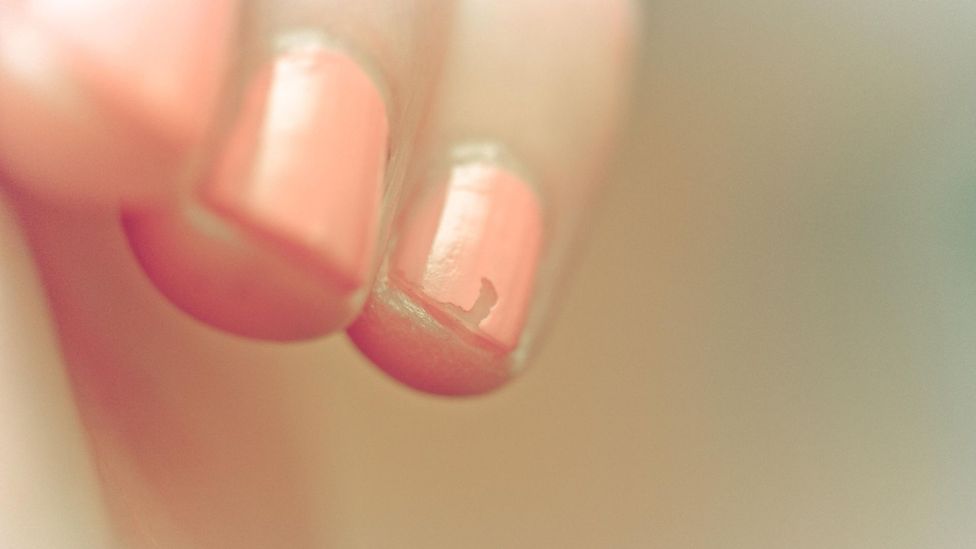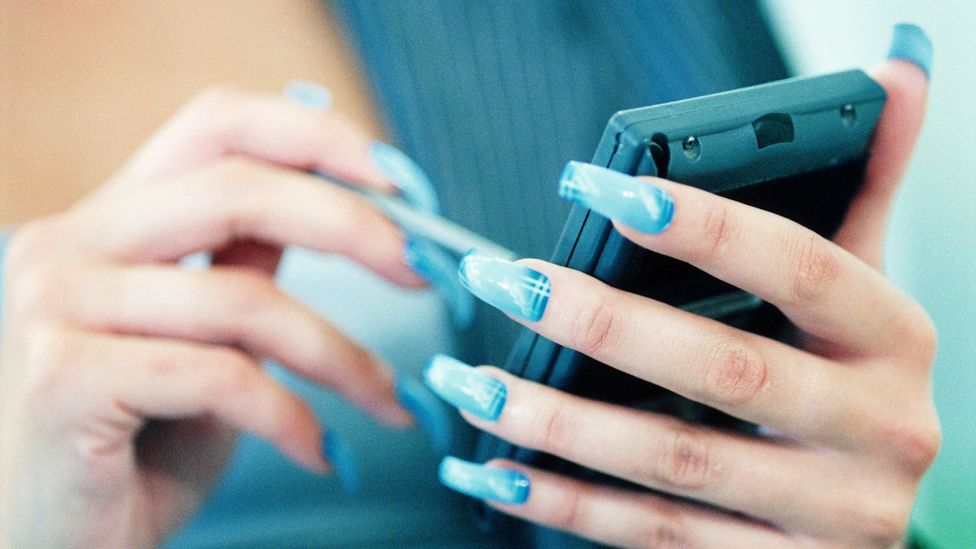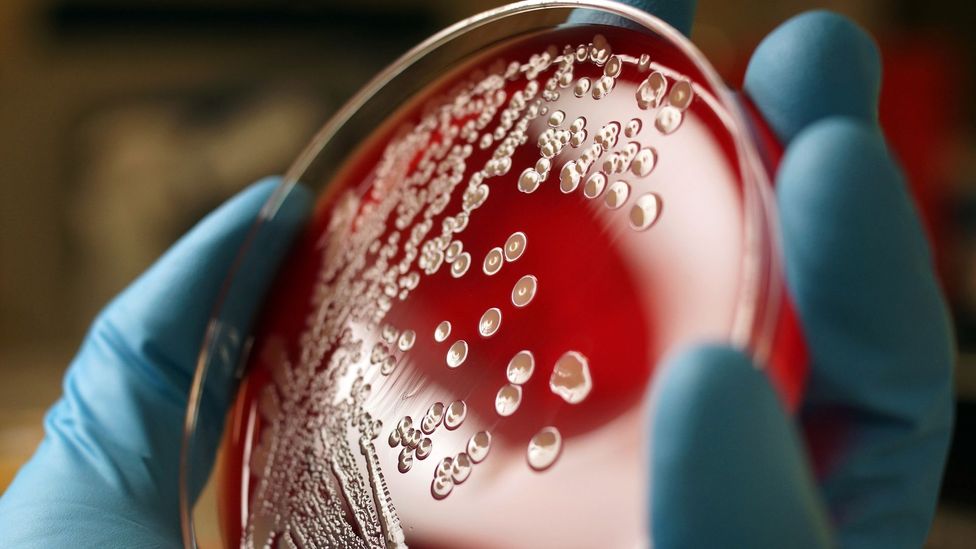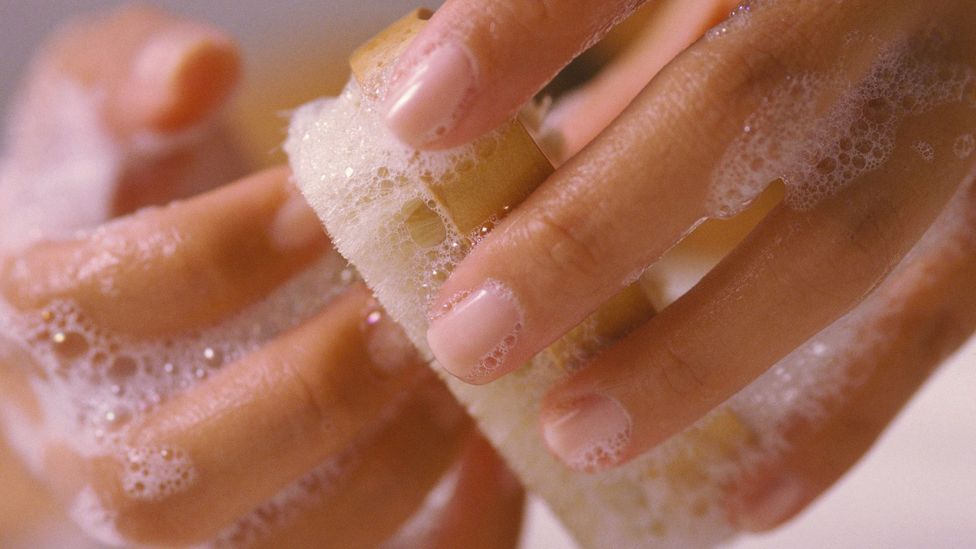What Lives Under My Nail
What lives under your fingernails?
(Image credit:
Getty Images
)

Washing your hands is the commencement defence against all kinds of nasty bacteria. But do you wash under your fingernails? Maybe y'all should…
Y
You lot probably know that handwashing is amidst the best ways of preventing the spread of germs. In many places, public health laws are in place to ensure that those in the food service industry go on their hands clean. On the other hand, no corporeality of scrubbing tin ever rid the hand of all its bacteria.
The impossibility of sterilisation is why doctors and nurses so often article of clothing gloves while interacting with patients. Indeed, near a hundred years ago, physicians began to realise that bacteria would always prove up in tests even after multiple re-washings. But it wasn't until the early 1970s that researchers began to identify the reason that hand-abode bacteria was then persistent.
It turned out that covering the fingertips could keep hands cleaner longer. Though it'due south not the fingertips which are so full of bacteria, only the fingernails. These sparse keratin shields, made of the same stuff every bit rhino or impala horns, harbour a bacterial menagerie.

Research has shown false nails can harbour more germs than natural ones (Credit: Getty Images)
It wasn't until the late 1980s that scientists began to poke around under our fingernails to see who, exactly, lives there. In one 1988 written report, a trio of researchers from the University of Pennsylvania's Department of Dermatology swabbed the hands of 26 adult volunteers, all employees of the university's medical schoolhouse who did non interact with patients.
They establish that the space under the fingernails, also called the subungual region, was "an important site" for harbouring leaner. Other parts of the volunteers' hands were home to hundreds to thousands of bacteria, while the subungual areas yielded hundreds of thousands of bacteria per fingertip. The fingernails harboured the aforementioned types of bacteria as the rest of the hand, just a lot more of them.
The researchers reasoned that could be because the infinite between the peel and nail creates a perfect surroundings for the growth and proliferation of these minute lifeforms, thank you to both the physical protection provided by the boom and all that moisture. The prior findings that persistent scrubbing doesn't sterilise the mitt, combined with the finding from their study "that there are significant numbers of leaner in the subungual compartment suggest[due south] that this hand region may be relatively inaccessible to antimicrobial agents during normal paw-washing procedures," they wrote.
Retrieve about information technology: the space under your fingernails is completely impervious to the best, and simplest, means nosotros have of preventing the spread of diseases.
Indeed, a small but thriving area of research continues to probe the very nature of the microbial life living on the fingernails of nurses. And non only natural nails, but besides artificial ones, or ones covered in smooth.

Each fingertip can provide a home to hundreds of thousands of bacteria (Credit: Getty Images)
In 1989, just one year post-obit the University of Pennsylvania study, a group of nurses wrote, "although unanswered questions apropos the safety and practicality of artificial nails remain, many wellness intendance workers accept succumbed to fashion trends and are at present wearing artificial nails".
The researchers wanted to see whether 56 nurses with bogus nails, which tend to be longer than natural nails and are almost e'er covered in nail smooth, had more than bacteria on their fingertips than 56 nurses with natural nails. They also wanted to run into whether handwashing was more or less effective for those with bogus nails.
They discovered that nurses with artificial nails had more bacteria on their fingertips than did those with natural nails, both before and afterwards handwashing. That's not to say that they were actually transferring more than bacteria to their patients, necessarily, only that the leaner living on their fingertips were more numerous. Still, the assumption is that more than bacteria at to the lowest degree increases the potential for pathogen transmission.
Like studies published in 2000 and 2002 yielded similar results. Just by then, nursing researchers had bear witness that artificial nails were also associated with poor handwashing practices, which only served to chemical compound the trouble. And bogus nails, they realized, were also more likely to tear dispensable gloves.
Painted, natural nails, on the other hand, tell a different story. The fearfulness with shine is that tiny chips or cracks in the paint could harbour bacteria. In 1993, nurses from Johns Hopkins Hospital in Baltimore looked at the fingernails of 26 adult women who were employed by the hospital, but not involved in patient care. All had short fingernails, and all were assessed both before and four days after nail polish was applied.

Washing hands isn't enough - you have to brand sure your finger nails are clean likewise (Credit: Getty Images)
Nail polish on natural nails did non seem to affect the richness of fingertip bacterial micro-biodiversity in the same way every bit polish on artificial ones, however. "Keeping nails short and clean, therefore, is probably more of import than whether or not nail polish is worn," the researchers ended. Some other study conducted the post-obit twelvemonth reached a similar conclusion. While polished nails more than than four days old had more bacteria, freshly polished nails were perfectly safe.
Some two to three meg people die each year from diarrhoea; information technology'due south idea that handwashing with soap could save perhaps a million of them. And it probably can. But in add-on to handwashing, the best class of activity seems clear: pay special attention to the subungual compartment beneath your fingernails when washing your hands, and for the least bacterially hospitable fingertips, keep them brusque and make clean.
All of which should give you lot pause before biting your nails.
Join 600,000+ Future fans by liking u.s.a. on Facebook , or follow us on Twitter , Google+ , LinkedIn and Instagram .
If yous liked this story, sign up for the weekly bbc.com features newsletter , chosen "If You Only Read 6 Things This Week ". A handpicked choice of stories from BBC Hereafter, Earth, Culture, Upper-case letter, Travel and Autos, delivered to your inbox every Friday.
What Lives Under My Nail,
Source: https://www.bbc.com/future/article/20160622-what-lives-under-your-fingernails
Posted by: machadopriandn.blogspot.com


0 Response to "What Lives Under My Nail"
Post a Comment